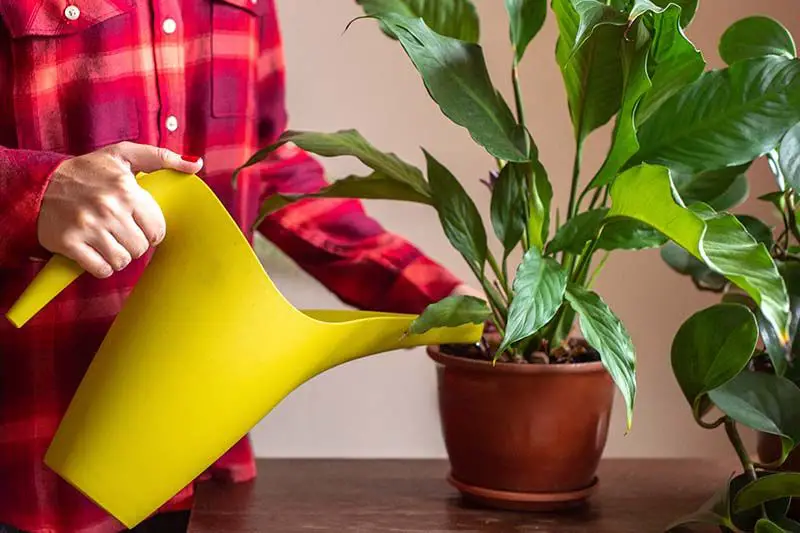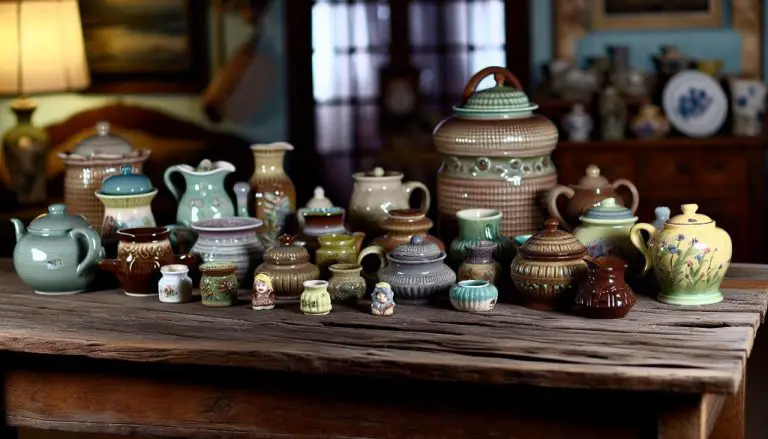Can Plants Survive In Ceramic Pots?
Introduction
Growing plants in ceramic pots has become an increasingly popular trend for both indoor and outdoor gardens. With their beautiful glazes and artistic shapes, ceramic pots allow gardeners to add visual interest to their greenery. But can plants actually thrive in ceramic containers? While ceramic pots have some drawbacks, they can also provide benefits for certain plants if used properly. This article will examine the pros and cons of ceramic pots for plants and provide tips on choosing the right plants and properly caring for them in ceramic containers.
Benefits of Ceramic Pots
Ceramic pots offer several benefits that make them popular choices for houseplants. A key advantage is that ceramic pots come in aesthetically pleasing designs and colors that can complement home decor. The glazed surface and variety of patterns allow for creative styling. Ceramic’s porosity also enables air and water to pass through the sides at a moderate rate, providing a healthy level of oxygen to plant roots while retaining some moisture (https://greengoddess.com/ceramic-container-benefits/). The thicker material helps prevent rapid drying while still allowing drainage. Ceramic pots are also quite durable and long-lasting compared to plastic options. With proper care, a quality ceramic pot can maintain its appearance and usefulness for years, making it a sustainable choice.
Downsides of Ceramic Pots
While ceramic pots offer some benefits, they also have some downsides to consider. One major downside is that ceramic pots can be quite heavy and prone to breaking if dropped or knocked over (source). The weight of a ceramic pot filled with soil and a plant can make it difficult to move around. Additionally, if a ceramic pot gets knocked off a shelf or table, it is likely to crack or shatter. This can damage or kill the plant inside.
Another downside is that ceramic pots can get extremely hot when left in direct sunlight (source). The material absorbs and retains heat very efficiently. This intense heat can damage sensitive plant roots and inhibit growth. It’s important to keep ceramic pots in a shaded area on hot sunny days to prevent burning the plant.
Plant Considerations
Many people are able to successfully grow plants in ceramic pots if they choose the right plants and care for them properly. Not all plants are well-suited for ceramic containers, so it’s important to select varieties that will thrive given the conditions ceramic pots provide.
Plants grown in ceramic pots have different needs than those grown directly in the ground. Container plants require more frequent watering and fertilization since their roots are confined. The soil can dry out quicker in above-ground pots, especially smaller ones. Proper drainage is also critical to prevent soggy soil and root rot.
When selecting plants, consider those that do well in dry, sandy soils and need less frequent watering. Succulents like sedum, aloe, echeveria, and cacti often flourish in ceramic pots. Herbs like thyme, oregano, and rosemary also tolerate dry soil. Dwarf fruit trees or compact vegetable varieties can produce well with attentive watering and care. Always choose plants suited to your climate and sun exposure.
The lighting needs of the plant must also be met. Full sun plants like petunias need at least 6 hours of direct light when grown in containers. Shade loving impatiens will thrive on a covered porch or other indirect light source. Pay attention to each plant’s light requirements.
With good drainage, an appropriate potting mix, and plants that do not require constant soil moisture, many plants can survive and grow beautifully in ceramic pots. Just be attentive to their care through consistent watering, fertilizing, and sunlight exposure.
Sources:
https://www.bhg.com/gardening/container/basics/how-to-grow-potted-plants/
https://dnr.illinois.gov/education/plantlists/plantlistcontainer.html
Ceramic Pot Properties
Ceramic pots have some key properties that impact how well plants can thrive in them. The main factors are porosity, thickness, and glazing.
Ceramic material is porous, meaning it has tiny holes that allow air and water to pass through the sides and bottom of the pot. This porosity creates good breathability and drainage, which is beneficial for plant roots. Thicker ceramic also retains more moisture than thin pots. According to Leaf Culture, the thickness and porosity of ceramic pots helps moderate soil moisture and humidity levels.
Unglazed ceramic pots retain the most moisture and allow air to pass through. Glazing makes the pot less porous and reduces breathability. Heavily glazed ceramic pots do not let air or water penetrate as well. The level of glaze changes how fast the soil will dry out. For plants that require more water, unglazed or partially glazed ceramic is a better choice. According to Mazzega’s Landscaping, the porosity and glazing of the pot impacts drainage and moisture retention, affecting plant health.
Proper Plant Care
When growing plants in ceramic pots, proper plant care is essential for the plant’s health and survival. One of the most important factors is watering. Ceramic pots can lead to faster drying out, so it’s important to check soil moisture frequently and water thoroughly when the top inch of soil becomes dry. Water until it runs out the bottom drainage holes, then empty any water that collects in the saucer. Plants may need watering as often as every few days in ceramic pots.How Safe Ceramic Pots for Plants
Fertilizing is also key to provide nutrients that may be lost from frequent watering. Use a balanced liquid fertilizer diluted to half strength every 1-2 weeks during the growing season. Reduce fertilizer in winter when plant growth slows. Always follow label directions carefully.

Monitor sunlight needs based on the specific plant variety. Most indoor plants do best in bright, indirect light rather than direct southern sun exposure. Rotate pots occasionally to ensure even sunlight distribution. Signs of too much light include yellowing or scorched leaves, while too little light causes sparse, small leaves and leggy growth.
Underwatering symptoms include wilting, drooping, yellowing leaves and stunted growth. It’s important to catch under-watering early and thoroughly soak the root ball. Overwatering leads to yellow, translucent leaves, brown root rot and mold growth. Allow the soil to dry out completely before watering again if over-watered. Proper ceramic pot drainage and monitoring soil moisture prevents underwatering and overwatering issues.
Ideal Plant Choices
When choosing plants for ceramic pots, it’s best to select varieties that thrive in evenly moist soil and humid conditions. Here are some great options:
Peace lilies are a top choice, as their waxy leaves and tropical origins mean they prefer the stable moisture levels provided by ceramic planters. According to Braid & Wood, peace lilies do well in medium to low light, making them versatile for many indoor spots.
Ferns are another excellent ceramic pot candidate. Their delicate fronds appreciate the humid microclimate created inside unglazed ceramic pots. Platt Hill Nursery recommends Boston ferns and bird’s nest ferns as top ceramic pot choices.
Finally, orchids thrive in ceramic planters. The porous material allows optimal airflow to the roots while retaining moisture. Moth orchids and phalaenopsis orchids are specifically recommended by experts for their beautiful blooms in ceramic container gardens.
The key is to select plants that naturally prefer humid, consistently moist (but not waterlogged) soil. This matches the conditions provided by ceramic pots. With the right plant choices, your plants can thrive for years in ceramic planters.
Pot Size Considerations
Choosing the right pot size is crucial for healthy plant growth. Generally, most plants do well with a pot diameter that’s roughly two inches bigger than their own rootball diameter. However, there are some exceptions. For example, orchids and succulents prefer being slightly pot-bound in small containers. On the other end of the spectrum, large palms need progressively bigger pots to support their extensive root systems and growth.
The most obvious sign your plant needs repotting is roots growing out of the drainage holes at the bottom. Rootbound plants often show symptoms like poor growth and yellowing leaves because the roots don’t have enough room to spread out and take up nutrients and water. Try to repot plants before they become severely bound. When repotting, go up just 1-2 inches in diameter to avoid shocking the plant.
Tips for Success
There are a few best practices to follow when gardening with ceramic pots to ensure your plants thrive. According to Tree and Landscape Company, it’s important to fill the bottom inch or two of a ceramic pot with packing peanuts, rocks, or broken terra cotta pieces before adding soil. This will promote drainage. You should also mix in sand or perlite with the potting soil to prevent soil compaction.
When watering your plants in ceramic pots, it’s critical to not overwater them. The porous material can absorb and retain moisture, so only water when the top inch of soil is dry according to OnManorama. Letting the plants dry out between waterings will prevent root rot. It’s also important to choose the right sized ceramic pot – too big and the soil will stay wet, too small and the roots won’t have room to spread.
Common mistakes to avoid are using pots without drainage holes, exposing the pots to dramatic temperature swings, and allowing excess water to pool in decorative outer pots. With the right soil, watering technique, and plant choices, ceramic pots can make beautiful and functional homes for your plants.
Conclusion
In summary, ceramic pots can provide an excellent environment for growing healthy indoor plants, but they do require some special considerations. The porous nature of terra cotta allows air to reach plant roots, preventing overwatering, but this means plants will dry out faster and require more frequent watering. With the right plant choices, proper watering and care, and optimal pot size, ceramic pots can help plants thrive indoors.
When choosing the right plants for ceramic pots, it’s best to select drought-tolerant varieties that appreciate the aeration ceramic provides. Succulents, cacti, orchids, ferns, and palms tend to do quite well. Pay close attention to your plant’s moisture needs and water thoroughly yet infrequently. Group plants together based on similar light and water requirements. With a little trial and error, ceramic pots can become an excellent vessel for raising vibrant, happy houseplants.



